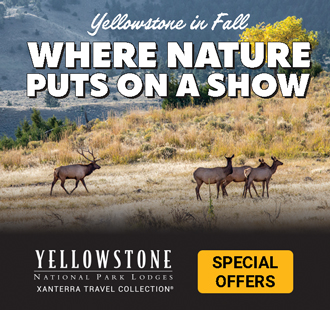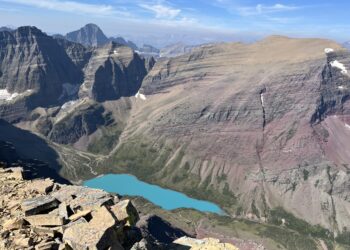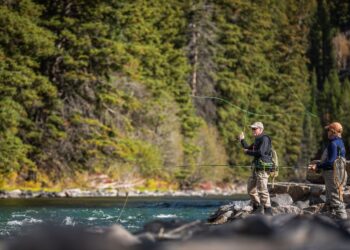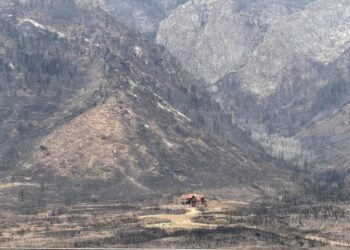Highlighting conservation heroes
By Benjamin Alva Polley EBS COLUMNIST
The Greater Yellowstone Ecosystem is one of the largest and most intact temperate-zone ecosystems on the planet, spanning approximately 22 million acres. This vast area encompasses public lands and private ranches, spanning parts of three states: Montana, Idaho, and Wyoming, and is larger than West Virginia, yet only partially protected.
At its heart lies Yellowstone and Grand Teton National Parks, which together comprise about 2.5 million acres, slightly more than 10% of the GYE. That means nearly 90% of this breathtaking expanse lies outside the parks’ boundaries, interspersed within a complex mosaic of private and public lands—largely untouched, but not for long.
As the region’s resplendent natural charm draws an ever-growing flock of visitors, the GYE faces imminent threats from unchecked development around Big Sky, and Jackson, Wyoming. Iconic species, such as bison and elk, grizzlies and wolves, as well as native trout and a diverse array of wildlife, rely on expansive, interconnected habitats for their seasonal migrations and survival. Yet, the rapid influx of new construction is disrupting some of North America’s longest-standing migration routes, disrupting the delicate balance of this pristine ecosystem.
Furthermore, the harsh realities of climate change, ushering in hotter and drier conditions, intensify the pressure on wildlife habitats, making it increasingly urgent to protect one of the world’s most pristine and interconnected ecosystems. With proper protection, the GYE can become a high-elevation refuge for fish, wildlife, and diverse native plant species.
“The Greater Yellowstone Ecosystem is a mosaic of public and private lands that provides critical habitat and migration pathways for iconic wildlife, such as pronghorn and elk, and supports cold water habitat for a resilient native fishery,” said Jim Berkey, High Divide Headwaters director for TNC Montana. “For decades, The Nature Conservancy has relied on collaboration, science and partnership to advance conservation efforts and ensure this vast landscape remains intact for generations to come.”
Leaders in conservation
The Nature Conservancy and other land trusts strive to safeguard the future of the Greater Yellowstone’s renowned wildlife, expansive forests, sagebrush habitats and crystal-clear, trout-infested rivers.

The Nature Conservancy stands as the preeminent leader in large-landscape conservation, collaborating seamlessly with private landowners, government agencies and other stakeholders to effect meaningful change. With over 70 years of experience protecting the planet’s most cherished natural landscapes, they also bring a wealth of local knowledge, having worked collaboratively with ranchers, agency partners, and the numerous communities that call the GYE home. Their initiatives yield benefits for both people and the environment.
The Nature Conservancy has protected over 117 million acres of land and 5,000 miles of rivers worldwide. They also manage over 100 marine conservation projects globally. In the GYE, with their partners, they have protected over one million acres of land and restored 1,500 miles of rivers, which helps safeguard migration routes, open space, key wildlife habitats, and the source of seven major rivers.
The Nature Conservancy operates beyond borders by navigating local, state, federal and Tribal policies. They develop cohesive conservation strategies that work across governments. Through scientific research and tools, they identify the most crucial areas for conservation efforts. They rely on conservation scientists, land protection specialists, and policy experts globally to apply their knowledge to the GYE.
This forward-thinking organization works to protect the lands and waters of Greater Yellowstone, spanning Wyoming, Montana and Idaho. They strive to preserve the summer and winter habitats of bison, elk, moose, pronghorn, and mule deer, and collaborate with private landowners to create wildlife-friendly fencing.
They also support Indigenous Peoples on reservation lands and ancestral territories by helping tribes purchase land to facilitate the reintroduction of bison.
The Nature Conservancy strives to be a good steward by partnering with numerous organizations and the public across diverse boundaries and governments. With all of the dark and gloomy news surrounding the environment and politics right now, I decided to highlight an organization that deserves recognition.
Benjamin Alva Polley is a place-based storyteller. His words have been published in Rolling Stone, Esquire, Field & Stream, The Guardian, Men’s Journal, Outside, Popular Science, Sierra, and other publications, and can be seen on his website.














